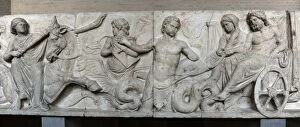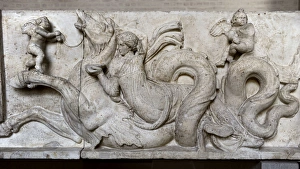Ahenobarbus Collection
Ahenobarbus: A Glimpse into Ancient Rome's Intriguing History Step back in time and immerse yourself in the captivating world of Ahenobarbus
All Professionally Made to Order for Quick Shipping
Ahenobarbus: A Glimpse into Ancient Rome's Intriguing History Step back in time and immerse yourself in the captivating world of Ahenobarbus, a prominent figure from ancient Rome. This enigmatic character left his mark on various aspects of Roman society, leaving behind intriguing artifacts that continue to fascinate historians today. One such artifact is the Denarius coin portraying Ahenobarbus, dating back to 41 BCE. Crafted by an unknown artist, this coin offers a glimpse into the physical appearance of this influential individual. With its intricate details and meticulous craftsmanship, it serves as a testament to the importance bestowed upon him during his lifetime. Another remarkable relic associated with the Altar of Domitius Ahenobarbus depicting the wedding of Poseidon and Amphi. Created around 150 BC, this masterpiece showcases not only his artistic patronage but also his connection to mythology and divine symbolism. The altar's detailed carvings transport us to an era where gods and goddesses played significant roles in everyday life. But who was Cneus Domitius? He was none other than Nero Claudius Caesar Augustus Germanicus himself - born Lucius Domitius Ahenobarbus - the fifth and last Roman Emperor of the Julio-Claudian Dynasty. His reign marked both glory and infamy as he navigated through political turmoil while indulging in lavish excesses that would forever be etched in history. Delving further into Nero's life reveals intriguing relationships with figures like Julia, daughter of Emperor Augustus, whose union with Nero brought forth alliances crucial for maintaining power within Rome's elite circles. Additionally, depictions such as "Nero at the Games" showcase his passion for entertainment and spectacle – traits that defined his controversial rule. The historical dictionary published in 1825 sheds light on these events surrounding Nero's reign while providing valuable insights into the political and social climate of ancient Rome.








